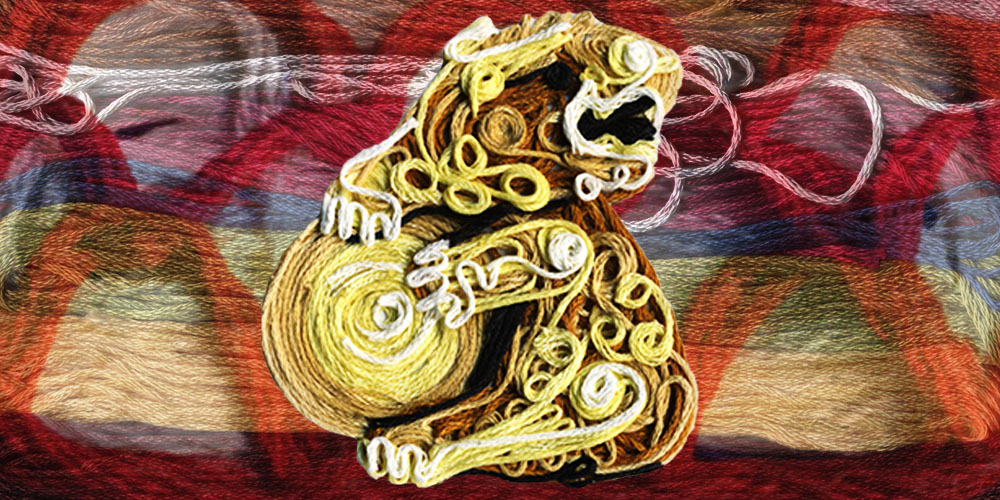At the CITES meeting in Geneva last August, the much anticipated triennial international conference on wildlife trade got off to a rocky start. Over 30 African countries, joined by numerous NGOs, supported a resolution that called for Japan and other countries that still have domestic ivory markets to immediately shut them down, arguing that all such markets “legal or illegal,” contribute to elephant poaching.
But it failed to get adopted, dashing the hopes of staunch ivory trade critics.
Japan has been here before. As one of the last developed countries that has yet to ban ivory sales within its borders, it’s routinely excoriated by wildlife advocates as an unapologetic hold-out.
The Japanese government insists that poached ivory from Africa does not enter the country; its ivory market only draws on stocks of pre-ban and legally imported ivory. But given the widespread laundering of poached tusks in ivory markets elsewhere, most elephant advocates are convinced that it must be happening in Japan as well — even if there’s no evidence of it.
The problem Japan has with ivory sales is much more complicated: it’s a tangle of seductive traditional art, insufficient enforcement and growing rejection of sustainable wildlife trade.
•
The creaking floors in Kyoto’s Seishu Netsuke Art Museum, a former 1820s samurai family residence, are covered in tatami mats, which means visitors have to shuffle quietly from room to room in staff-provided slippers. It slows progress but focuses attention on one display of fascinating, often bizarre small carvings at a time.
In a dark-beamed top floor room, I stare at a 19th-century piece barely two inches in size labeled Rat Dragging a Cat, a figurine of an upright rodent pulling a large sack holding a soundly sleeping cat — a droll variation on cats bringing dead mice to their owners. Like so many of the pieces on exhibition, its creamy-beige, entangled forms, right down to the intricately detailed fur, are carved from ivory. There’s a reason for that.
The craft of netsuke began with small carvings fastened as toggles on one end of a cord used to hang pillboxes, purses, and tobacco pouches from the obi, or sash, of pocketless kimono dress during the Edo period (1603-1867). Embodying a dizzying range of motifs from mythological to erotic and dazzling carving techniques, stains and inlays, netsuke is made from materials that can take intricate carving — certain woods, antlers, ceramics, various metals, and enamel, but above all, elephant ivory, long sought by netsuke artisans for its unsurpassed carve-ability and sensuous feel. Half of all netsuke are thought to be made from ivory. Contemporary carvers are still using it, which means the revered art of these miniatures, along with the country’s other traditional ivory crafts, is now caught up in a global-sized controversy.
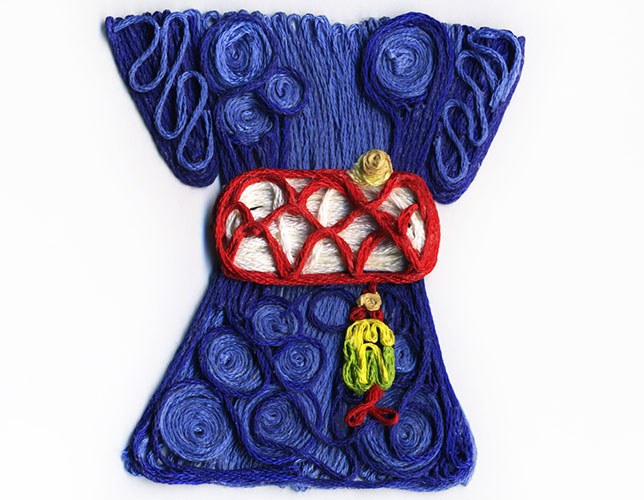
•
13 years ago, Japan was actually lauded by CITES for its ivory policies. Since then, the elephant conservation context — specifically, the debate on ivory trade — has radically reshaped how the issue is perceived.
Here’s the backstory: Japan is the only country to have legally imported ivory twice since the historic 1989 CITES ban on cross-border ivory sales. In 1999, Japanese traders imported 50 tons of ivory from government stockpiles of tusks in Botswana, Namibia, and Zimbabwe, in an “experimental” CITES-approved sale. In 2006, the Secretariat of CITES took the position that the country’s legal ivory market was well-regulated, and recommended that “Japan should be, once again, designated as a trading partner.”
In 2008 another CITES-permitted African ivory sale, which included China, was the last time Japan was able to import tusks to supply its historically shrinking ivory carving industry, which turns out primarily hankos (signature seals), plus parts of traditional musical instruments like the shamisen, and lesser quantities of jewelry, curios, and netsuke.
During the same time frame, African elephants were being poached for their tusks at unsustainable rates not seen since the 1980s, driven largely by the seemingly insatiable Chinese appetite for “white gold.” Although the 1989 ivory ban closed international trade, it did not address ivory sales within countries. The growing numbers of elephant killings led to a resolution at the 2016 CITES meeting in Johannesburg calling for legal ivory markets everywhere, including Japan’s, to be closed to prevent their use as a cover to launder poached ivory.
A near-total ban on commercial ivory sales in the U.S. had already gone into effect that year. It was followed by the dismantling of China’s domestic ivory market in late 2017, marking a seismic shift for a country that had staunchly defended its ivory carving industry as “culturally important.” The about-face was applauded by conservationists who had long hoped the end of legal sales there would help throttle the country’s huge black market, a seemingly bottomless hole for poached tusks.
Now that the UK has enacted a domestic ivory ban, joining a number of African countries, Japan’s legal ivory market is thought to be the largest one remaining.
Ivory trade analyst Lucy Vigne, who has written and co-authored numerous authoritative reports on global ivory markets, spent a month in Japan late last year to update her previous research. As a transit or destination country, “Japan has so far not been implicated in the large illegal shipments of [African] ivory to Asia,” she emailed during her recent travels. “NGOs are watching closely,” she added. “If this happens then it is another matter.”
If poached ivory isn’t going to Japan, closing down its domestic ivory sales won’t have any direct effect on poaching. But Japan’s market isn’t confined solely to Japanese consumers. In today’s world, a traditional ivory industry like theirs is difficult (some say impossible) to contain within increasingly permeable national borders.
Policing Japan’s online sales of the country’s ivory carvings to foreign buyers continues to be a troubling aspect of the country’s legal market. Yahoo Japan, the country’s major e-commerce platform, announced in late August that it would join competitors who have already banned the sale of ivory. However, the move is unlikely to choke off all online sales.
It’s another example of how Japan may not have a problem with illegal ivory entering the country but has a problem with legal ivory leaving the country. Although “ivory products sold to customers are not allowed to be exported to foreign countries,” as the Japan Federation of Ivory Arts and Crafts Associations (JIA) states in its latest pamphlet, numerous ivory products purchased in Japan are being successfully smuggled through Chinese customs by returning tourists who persist in buying ivory, legal or not. According to Traffic.org, a majority of Japanese ivory vendors are willing to sell ivory items to those intending to export them. The practice adds to China’s struggle to clamp down on its black market. And it’s why Japan’s ivory trade has been accused of “undermining efforts to combat illegal activity.”
And what about various crimes that have been uncovered, including the buying of in-country unregistered tusks? The government regards them as evidence of effective enforcement. Detractors say these lapses demonstrate that Japanese ivory laws are riddled with loopholes, making it easy to circumvent the rules.
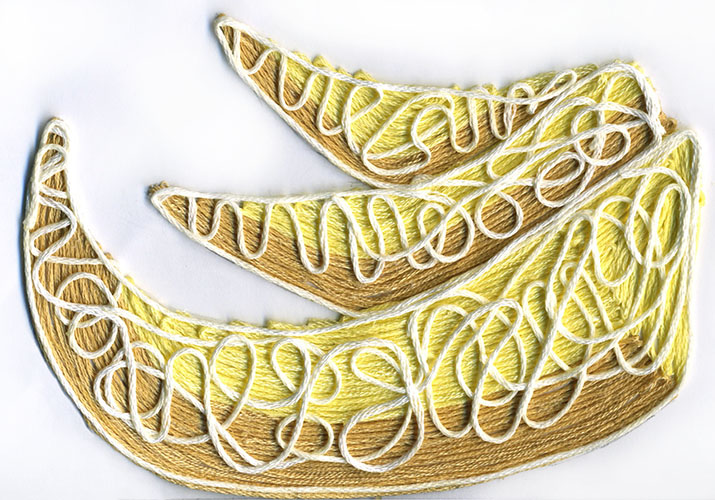
•
Sagemonoya, which specializes in antique netsuke, is tucked away on the 7th floor of a brick building in the busy Shinjuku ward of Tokyo. At first glance, it looks more like a bookstore than a gallery. But that’s because many of the artworks it offers are small enough to be displayed in divided trays which assistants bring out for inspection, along with tea.
I sit at a table with Robert Fleischel, the firm’s founder and co-owner, looking over an array of both antique and contemporary netsuke, each example nestled in its own plush compartment. He usually has about 300 pieces available, most of them antiques; prices vary from a few hundred US dollars to thousands more, depending on quality and rarity.
Netsuke differ remarkably in subject and shape, color and treatment, and artistic value. I look at carvings from various woods and nuts, minerals and horn, and bone and ivory. Some are as smooth as polished river stones, others complex and chiseled, textured and stained. Subjects included animals and fruits, deities and laborers, monks, masks, and coy geishas; some amusing, others striking or deeply contemplative. I’m drawn to a late 19th-century rabbit carved from yew wood to take advantage of its natural interior color changes, leaving its ears yellow and its body red-brown. Fleischel points out the bravura carving, some of it achieved with single strokes. I reach out my hand and pause.
“Please,” Fleischel says. “Handling is how they get their patina.”
I’d missed the sense of touch in my museum experience of netsuke. They’re meant to be held, not just viewed, which is why it’s nearly irresistible to pick them up. There’s no orientation to netsuke. Intended to hang and swing from the kimono sash, they’re understood from every angle, not simply viewed “upright.” That’s why they’re often cradled in the palm of the hand, which is how I slowly roll the smooth, satiny rabbit figure.
I ask about the difficulty of determining a netsuke’s age. “It’s a matter of experience,” he says. “I’ve been at this for 30 years.” First as a collector, he adds, then as a prominent dealer. There are recognizable periods, schools, techniques, individual masters. Some are signed, others not.
Fleischel explains that netsuke has long been admired and collected by Westerners; in the modern period, it gained in popularity after WWII, then peaked again in the 1970s. Recently Edmund de Waal’s best-selling memoir, The Hare with Amber Eyes: A Hidden Inheritance, spiked interest.
Netsuke are still being made. The craft isn’t dying out, but it’s not exactly booming. A master carver might take a month or more to make a single netsuke. “There are probably only a dozen carvers that actually make a living from it,” Fleischel says. “For most,” he adds, “it’s a sideline.”
Is elephant ivory still a favored material? “Contemporary netsuke carvers switched to mammoth ivory many years ago, when the elephant ivory ban started,” he says. “Some continue using elephant ivory, but only for the Japanese market,” in which its sale “is still authorized.”
And how does banning domestic ivory sales affect the global market for specialized items such as ivory netsuke? “The impact on international trade is already felt,” Fleischel says, especially in the US and UK. “English auction houses no longer offer ivory items in their catalogs.” He finds such bans “a pity for genuine, antique, and beautiful works of art,” but fully supports them if they stop “the trade of factory carved new souvenir-type ivory netsuke,” — i.e., the sale of ivory trinkets.
Sagemonoya is also the headquarters for the International Netsuke Society (Fleischel is chairman of the Japan chapter) and regularly publishes glossy catalogs of netsuke and sagemono (hanging objects). On its website, the Society makes it clear that it is “vehemently opposed to the poaching of elephant ivory” and “opposes trafficking, trade or commerce of illegal ivory.”
For its part, the JIA, which represents the ivory industry, puts the matter starkly: “If African elephants become extinct, our industry will also be extinct.” In other words, without healthy populations of elephants supplying legal ivory in the form of natural mortality tusks, there’d be no ivory to carve and sell. But these days few elephant advocates still embrace the idea that sustainable ivory use has a role to play in elephant conservation.
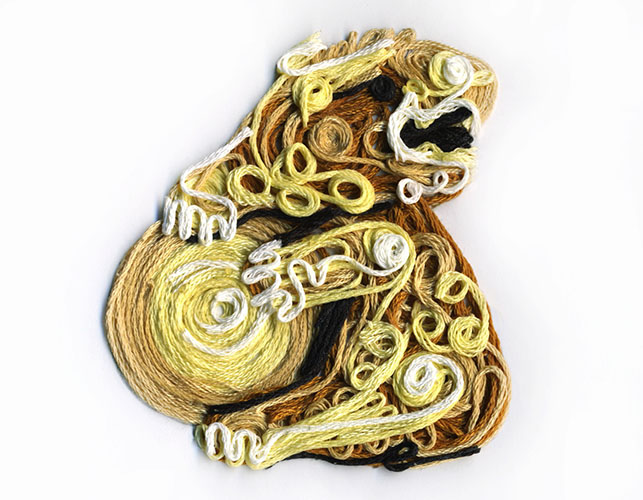
•
To its credit, Japan has taken significant steps to tighten its regulations. Ivory businesses must be registered, as well as whole tusks; traceability information is required for carvings over one kilogram, as are records on every ivory transaction. According to its Ministry of Foreign Affairs, sellers are now required to explain to buyers, “including foreign visitors,” the legal implications of exporting ivory. Violators face substantial fines and prison sentences.
In mid-2019, to ensure that no poached ivory could enter its market, the government added carbon dating (which can pinpoint the associated elephant’s year of death) to the current mandatory registration of privately held tusks before they can be sold. Unfortunately, the rule doesn’t apply to existing stockpiles or cut ivory, which reduces the effort to a half measure. Still, it’s an important step in the right direction. The recent CITES conference determined that Japan, along with other countries with domestic ivory markets, is required to report measures to prevent illegal trade next year.
But how far would Japan be willing to go to satisfy critics of its ivory market? Would it establish a data bank of all existing stocks and a registry of all legal ivory products in private hands, set up a process to authenticate antiques, and top it off by finding a way to tighten border controls and stifle the smuggling of carvings? (All of which seems inevitable if adequate market control is the goal).
At this historical juncture, however, it may be too late to develop a model ivory market.
No matter what’s done to fine tune Japan’s domestic system, it’s unlikely to appease the vast numbers of elephant advocates who’ve convinced themselves that the poaching problem lies with ivory itself, not what’s done with it. Many believe that any ongoing legal market, no matter how well-enforced, keeps interest in this “tainted” substance alive, giving it legitimacy when — so the thinking goes — even guilt-free ivory from elephants that die of natural causes should be stigmatized, shunned, and consigned to oblivion.
Elephant advocates have long been pushing for draconian domestic bans that promote an unbending, no-ivory agenda. “We are calling on EU countries to halt all ivory trade within, to and from the EU and strengthen enforcement,” Mary Rice, executive director of the Environmental Investigation Agency, said in 2014. She added that “this includes measures to destroy their stockpiled ivory — both carvings and raw tusks — irrespective of its source and alleged age.”
With the exception of Luxembourg, the EU bloc still allows some domestic ivory sales. It finally prohibited problematic exports of raw ivory (such as pre-ban colonial-era tusks) in 2017, but in tandem with US, China, and now UK bans, certain cultural artifacts, and scientific specimens are clearly exempted.
Why, many ask, should there be any exemptions? Well, it’s one thing to burn stockpiles of uncarved tusks. It’s something else entirely to inflict cultural self-harm by consigning historically important art to the flames.
That grim prospect doesn’t bother ardent anti-ivory crusaders, who argue the mere existence of these objects, much less trade in them, would still feed the craven longing for ivory. Consider The World Wildlife Fund’s 2016 report, Reducing Desire for Ivory: A Psychosocial Guide to Address Ivory Consumption, which “examines how societal and cultural forces combine with individual experiences and emotions to generate a desire for ivory.” The report’s apparent goal is to increase the effectiveness of awareness campaigns, but the language used treats the desire for ivory as an outright addiction that has to be “redirected” in a kind of, well, conversion therapy.
“Demand for ivory,” we are told, “arises from a desire whose roots may reach so far underground that the consumers themselves cannot fully explain their powerful attraction.”
The authors seem utterly unaware that ivory is an organic material that’s been used since pre-history not merely to make spear points, beads, combs, and later billiard balls and piano keys, but also masterpieces of art treasured in cultures across the world: Paleolithic Venus figures, Egyptian amulets, Roman diptychs, medieval reliquaries, Islamic oliphants, Chinese puzzle balls, Baroque nudes, and yes, Japanese netsuke, as I’ve written about elsewhere. 40,000 years of history might just possibly have something to do with ivory’s age-old allure, and why interest in it can’t be ignored or expunged — only carefully managed to ensure the preservation of culturally important ivory art along with the protection of elephants. (Yes, these efforts can be done in tandem).
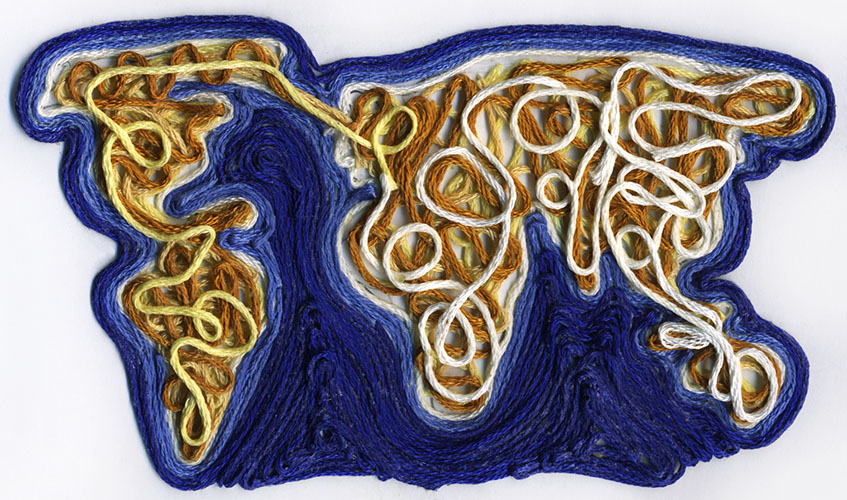
•
Before leaving Sagemonoya, I take a last look at the padded trays of netsuke. Among the various offerings, the ivory figures hold out an allure beyond their carving: their seductive feel. I pick up an ivory netsuke of a fat, smiling monk and circle my thumb around the figure’s polished belly.
Japan is certain to face increased criticism over its ivory policies when it hosts the Olympic Games next year. Anti-ivory elephant advocates in Western countries have already telegraphed the idea of urging wildlife lovers to boycott the events. But it’s home-grown attitudes that make the future of ivory commerce look dim. Younger Japanese consumers show little interest in ivory and regard collecting it as old-fashioned and out of step; inherited carvings are typically sold off. As a result, the ivory market has shrunk to a tenth of the size it was some 30 years ago. The country also has its own local critics — not just conservationists, but film stars, sports figures, celebrities — who’ve joined campaigns like WildAid’s call for Japan to banish ivory sales.
But Japan does not like to be lectured about issues it considers internal matters, such as commercial whaling, which it recently resumed despite international outcry. The government regards the relatively small, traditional use of ivory as part of Japanese culture. It could simply dig in its heels and ignore the calls to shut its domestic ivory market.
To support its ivory industry, Japan will eventually need to supplement its existing stocks. The country has long indicated its support for sustainable wildlife management which would allow it to purchase legal ivory and generate much-needed funds for elephant conservation in the process. In fact, four southern African nations with stable or growing elephant populations (Botswana, Namibia, South Africa, Zimbabwe) argued at the recent CITES meeting that they should be allowed to sell their ever-growing stockpiles of legal ivory — potentially worth hundreds of millions of dollars — instead of being forced to conserve their elephants, which total more than half the continent’s numbers, without benefitting from their ivory. The proposal was soundly defeated in a secret ballot, 101 to 23. Sources say Japan was one of the countries that voted yes.
But wait, isn’t there a way to help African countries who’ve done a good job with their elephants, without allowing ivory sales? Of course — countries advocating a total end to the ivory trade could put their money where their collective mouth is, buy all those African stockpiles and burn them. Unsurprisingly, there’s been zero interest in doing that. Little wonder some leaders of these cash-strapped countries, like Zimbabwe’s President Emmerson Mnangagwa, are now talking of withdrawing from CITES. He said he was looking forward to “cooperating” with Japan to promote sustainable wildlife management.
But given the stalemate over ivory trade policies in Africa, there’s little chance of resumption of CITES-approved ivory sales, and it’s not clear if, say, a trading cartel outside the CITES framework could get off the ground. That makes it likely that Japan’s legal ivory inventory, already shrunk by a third at this point, could simply run out.
If that prospect starts to seem inevitable, Japan could take the unprecedented step of closing its domestic legal ivory market now — except for the kind of cultural exemptions countries that have closed theirs rightly insist upon — and be widely (though not universally) applauded. It would still have a legal market, but a truncated one that might be limited to the possession and inheritance of bona fide antiques. The cultural cost? No new carving of ivory hankos or jewelry or netsuke, only art restorations and the repair of traditional musical instruments.
The craft of netsuke would endure, even if its most prized material is swept off the carver’s table. Ivory’s historic role in this uniquely Japanese art form would remain visible, but confined to the closed world of pre-ban antiques and associated museum collections.
What Japan will do is far from clear.
I take a final look at the little ivory figure, then drop it into the cushioned tray. •
